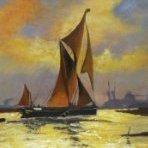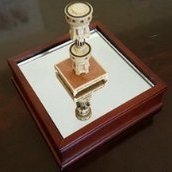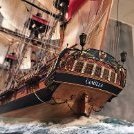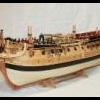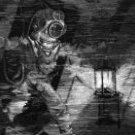HOLIDAY DONATION DRIVE - SUPPORT MSW - DO YOUR PART TO KEEP THIS GREAT FORUM GOING! (Only 66 donations so far out of 49,000 members - Can we at least get100? C'mon guys!)
×
-
Posts
2,176 -
Joined
-
Last visited
Reputation Activity
-
 uss frolick got a reaction from DelF in Chris Watton and Vanguard Models news and updates Volume 2
uss frolick got a reaction from DelF in Chris Watton and Vanguard Models news and updates Volume 2
Remember, when nosey customers show up unannounced and demand a tour, you will need an executive pub /media center.
-
 uss frolick reacted to Ian B in Arado Ar-196 by Ian B - FINISHED - PLASTIC - German seaplane
uss frolick reacted to Ian B in Arado Ar-196 by Ian B - FINISHED - PLASTIC - German seaplane
Started the splint camouflage
-
 uss frolick reacted to Ian B in Arado Ar-196 by Ian B - FINISHED - PLASTIC - German seaplane
uss frolick reacted to Ian B in Arado Ar-196 by Ian B - FINISHED - PLASTIC - German seaplane
Surprisingly the aircraft carried its lifting cables externally where all weight is important to lug these around is a strange design decision 🤔
This bit of ugly plastic is the kits version
So no self respecting ship builder on here could tolerate that..so made some
That's Better
-
 uss frolick reacted to marsalv in L'Amarante by marsalv - 1:36 - POF
uss frolick reacted to marsalv in L'Amarante by marsalv - 1:36 - POF
Thanks for the positive responses. The downside of using this technique is that you spend more time at the computer figuring out how to make the part as efficiently as possible.
Added a few details on the bow - bolster, gammonig "pillow" and wash-piece.
-
 uss frolick got a reaction from Oboship in Chris Watton and Vanguard Models news and updates Volume 2
uss frolick got a reaction from Oboship in Chris Watton and Vanguard Models news and updates Volume 2
Remember, when nosey customers show up unannounced and demand a tour, you will need an executive pub /media center.
-
 uss frolick got a reaction from CiscoH in Chris Watton and Vanguard Models news and updates Volume 2
uss frolick got a reaction from CiscoH in Chris Watton and Vanguard Models news and updates Volume 2
Remember, when nosey customers show up unannounced and demand a tour, you will need an executive pub /media center.
-
 uss frolick got a reaction from AJohnson in Chris Watton and Vanguard Models news and updates Volume 2
uss frolick got a reaction from AJohnson in Chris Watton and Vanguard Models news and updates Volume 2
Remember, when nosey customers show up unannounced and demand a tour, you will need an executive pub /media center.
-
 uss frolick got a reaction from Nirvana in Chris Watton and Vanguard Models news and updates Volume 2
uss frolick got a reaction from Nirvana in Chris Watton and Vanguard Models news and updates Volume 2
Remember, when nosey customers show up unannounced and demand a tour, you will need an executive pub /media center.
-
 uss frolick got a reaction from hollowneck in Chris Watton and Vanguard Models news and updates Volume 2
uss frolick got a reaction from hollowneck in Chris Watton and Vanguard Models news and updates Volume 2
Remember, when nosey customers show up unannounced and demand a tour, you will need an executive pub /media center.
-
 uss frolick got a reaction from Rustyj in Chris Watton and Vanguard Models news and updates Volume 2
uss frolick got a reaction from Rustyj in Chris Watton and Vanguard Models news and updates Volume 2
Remember, when nosey customers show up unannounced and demand a tour, you will need an executive pub /media center.
-
 uss frolick got a reaction from thibaultron in Chris Watton and Vanguard Models news and updates Volume 2
uss frolick got a reaction from thibaultron in Chris Watton and Vanguard Models news and updates Volume 2
Remember, when nosey customers show up unannounced and demand a tour, you will need an executive pub /media center.
-
 uss frolick got a reaction from Canute in Chris Watton and Vanguard Models news and updates Volume 2
uss frolick got a reaction from Canute in Chris Watton and Vanguard Models news and updates Volume 2
Remember, when nosey customers show up unannounced and demand a tour, you will need an executive pub /media center.
-
 uss frolick got a reaction from Gregory in Chris Watton and Vanguard Models news and updates Volume 2
uss frolick got a reaction from Gregory in Chris Watton and Vanguard Models news and updates Volume 2
Remember, when nosey customers show up unannounced and demand a tour, you will need an executive pub /media center.
-
 uss frolick got a reaction from chris watton in Chris Watton and Vanguard Models news and updates Volume 2
uss frolick got a reaction from chris watton in Chris Watton and Vanguard Models news and updates Volume 2
Remember, when nosey customers show up unannounced and demand a tour, you will need an executive pub /media center.
-
 uss frolick got a reaction from thibaultron in Chris Watton interview
uss frolick got a reaction from thibaultron in Chris Watton interview
I'm disappointed. I thought Chris would be sporting a mustache-less beard, a long plaited pigtail, have "hold fast" tattooed across his knuckles, and sound just like Preserved Killick.
-
 uss frolick got a reaction from GrandpaPhil in Chris Watton interview
uss frolick got a reaction from GrandpaPhil in Chris Watton interview
I'm disappointed. I thought Chris would be sporting a mustache-less beard, a long plaited pigtail, have "hold fast" tattooed across his knuckles, and sound just like Preserved Killick.
-
 uss frolick got a reaction from Cathead in Chris Watton interview
uss frolick got a reaction from Cathead in Chris Watton interview
I'm disappointed. I thought Chris would be sporting a mustache-less beard, a long plaited pigtail, have "hold fast" tattooed across his knuckles, and sound just like Preserved Killick.
-
 uss frolick got a reaction from Canute in Chris Watton interview
uss frolick got a reaction from Canute in Chris Watton interview
I'm disappointed. I thought Chris would be sporting a mustache-less beard, a long plaited pigtail, have "hold fast" tattooed across his knuckles, and sound just like Preserved Killick.
-
 uss frolick got a reaction from chris watton in Chris Watton interview
uss frolick got a reaction from chris watton in Chris Watton interview
I'm disappointed. I thought Chris would be sporting a mustache-less beard, a long plaited pigtail, have "hold fast" tattooed across his knuckles, and sound just like Preserved Killick.
-
 uss frolick got a reaction from bruce d in "Wind of the ball" injuries.
uss frolick got a reaction from bruce d in "Wind of the ball" injuries.
I suspect that the militiaman who died might have had a massive heart attack. Cannonballs are scary things, especially when they are coming straight at you.
-
 uss frolick got a reaction from Nightdive in "Wind of the ball" injuries.
uss frolick got a reaction from Nightdive in "Wind of the ball" injuries.
While this video is about the 1775 Battle of Bunker Hill, it describes two cases of just such an injury, possibly caused by nearby British naval gunfire. The same applies to period naval battles. You don't need to get hit by a cannon ball to get killed by it.
-
 uss frolick got a reaction from tmj in "Wind of the ball" injuries.
uss frolick got a reaction from tmj in "Wind of the ball" injuries.
I suspect that the militiaman who died might have had a massive heart attack. Cannonballs are scary things, especially when they are coming straight at you.
-
 uss frolick got a reaction from thibaultron in "Wind of the ball" injuries.
uss frolick got a reaction from thibaultron in "Wind of the ball" injuries.
I suspect that the militiaman who died might have had a massive heart attack. Cannonballs are scary things, especially when they are coming straight at you.
-
 uss frolick reacted to Tumblehome in "Wind of the ball" injuries.
uss frolick reacted to Tumblehome in "Wind of the ball" injuries.
No,no...
I'll refrain myself from commenting about balls passing between spread legs🤪
-
 uss frolick got a reaction from ccoyle in "Wind of the ball" injuries.
uss frolick got a reaction from ccoyle in "Wind of the ball" injuries.
While this video is about the 1775 Battle of Bunker Hill, it describes two cases of just such an injury, possibly caused by nearby British naval gunfire. The same applies to period naval battles. You don't need to get hit by a cannon ball to get killed by it.




